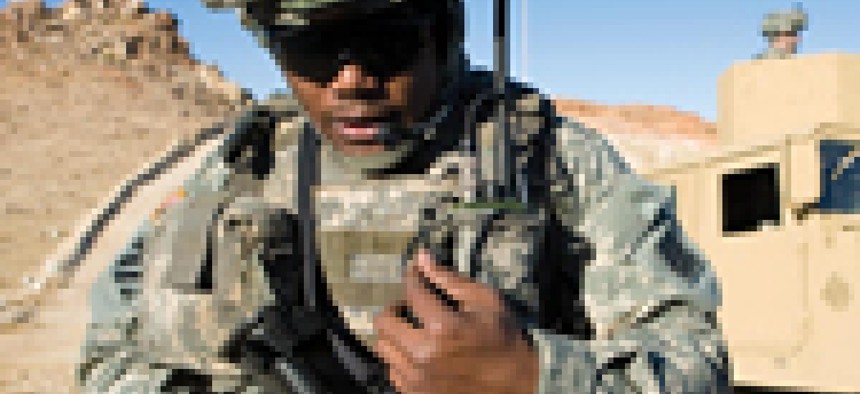JTRS-approved radios coming to Marines
Harris is delivering 9,300 handheld and 6,100 vehicle-mounted radios to the Marine Corps through the Consolidated Interim Single Channel Handheld Radio Program.
More Joint Tactical Radio System-approved radios are making their way to the field after the Marine Corps placed a $96.7 million order for 9,300 handheld and 6,100 vehicle mounted Harris Corp. Falcon III tactical radios.
Harris is one of two manufacturers approved by the JTRS joint program executive office to sell software-defined radios that can operate within the JTRS software communications architecture. The other manufacture is Thales; both companies have indefinite delivery, indefinite quantity contracts under the Consolidated, Interim, Single-Channel Handheld Radio program. CISCHR was created in 2007 with the intent of bundling all Defense Department single-channel handheld radio buys under a single acquisition vehicle. Harris’s contract could be worth nearly $2.7 billion over 5 years if all contract options are extended. Task orders with Thales could reach a maximum of $3.5 billion over that same time. JTRS is the DOD effort to make signal processing a function of software rather than hardware, making waveforms analogous to the applications running on a desktop computer. The first JTRS radios are set to roll off the assembly line in 2011.
Being “JTRS approved” isn’t the same as being a full-fledged JTRS radio, explained Bill Beamish, Harris director of Falcon III manpack product line management. “You basically meet all the requirements of the operational requirement document,” he said. But there are some JTRS capabilities functions that an approved radio can’t do. For example, Falcon III radios don’t have high-frequency coverage.
“The burden of HF wasn’t worth the additional cost and time,” said Beamish. Harris developed Falcon III radios with its own money. “Because we developed them on internal funding, we didn’t try to satisfy every single ORD requirement. We went for what we believe is the best value,” he said, adding that it doesn’t’ appear that the military is buying that many radios for HF applications.
Beamish said the ORD calls for a two-channel manpack but the biggest demand appears to be for single channel radios. Single channel software defined radios can tune into multiple waveforms, but only one at a time.
The main benefit of JTRS-approved radios isn’t immediate so much as long term, said Marine Corps Lt. Col. John Calvert deputy program manager for communication and networking systems. “When I tell you that I’ve got a [tactical handheld radio] today that’s a SCA radio, it’s not giving me any more capability … on the front line than it did two or three years ago,” he said, “but, because of its software defined architecture, it can be more readily upgraded with new capabilities.”
Software-defined radios will also simplify the service’s hardware inventory, which in turn will have benefits when it comes to parts inventory and training with radios, Calvert added.
There is a new beneficial feature to the vehicle-mounted radios, however, Calvert said. The mounts are really just a power amplifier and a battery charger. The actual radio functionality is still housed in a handheld radio that with just a few flips of levers can be taken out of the vehicle. “In the past, that radio that was in the vehicle was bolted into the vehicle, and could not be quickly removed,” he said. Now, “if, say, that radio came into contact with an opposing force or for some other reason needed to dismount … [a Marine] can take off of foot and purse the enemy or solve the problem.”
NEXT STORY: Navy awards continuing contract for CNI support




